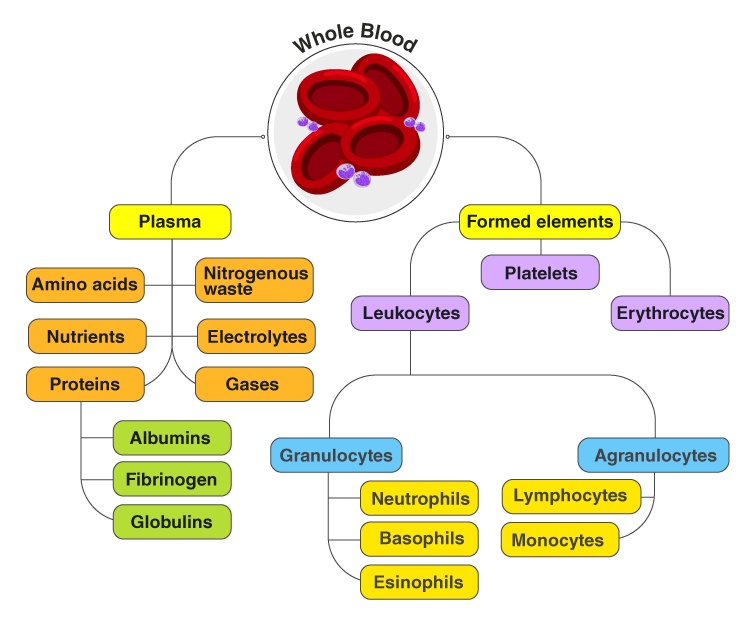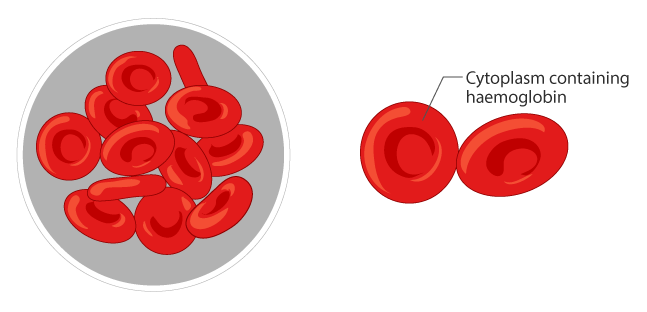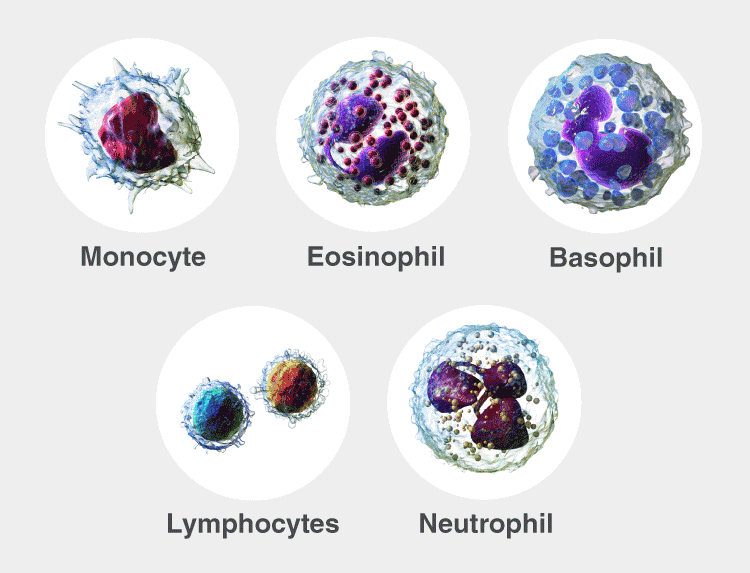
Introduction
- Blood is a vital fluid in the human body that plays a crucial role in maintaining homeostasis and supporting various physiological functions.
- It consists of both liquid and cellular components that work together to ensure proper functioning of the body.
- The liquid portion, known as plasma, is primarily made up of water, electrolytes, proteins, hormones, and waste products.
- The cellular components of blood include red blood cells, white blood cells, and platelets, each serving distinct functions.
- Red blood cells are responsible for transporting oxygen from the lungs to the tissues and carrying carbon dioxide back to the lungs for exhalation.
- White blood cells are key players in the immune system, defending the body against infections and foreign invaders.
- Platelets are involved in clotting, helping to prevent excessive bleeding when injury occurs.
- Blood also plays an essential role in maintaining body temperature, regulating pH, and ensuring that nutrients and gases are distributed throughout the body.
Composition of Blood
Blood consists of two major components: plasma and formed elements. Each part has unique characteristics and functions.
 Plasma (55% of Blood Volume)
Plasma (55% of Blood Volume)
Plasma is the liquid portion of blood, about 55% of its total volume. Plasma is the transport medium for the formed elements (cells) and dissolved substances.
1. Water (90% of Plasma):
- Acts as a solvent for carrying other components.
- Helps regulate body temperature by distributing heat.
2. Plasma Proteins (7-8% of Plasma):

Synthesised mainly in the liver, plasma proteins perform a range of functions:
a. Albumin:
-
- The most abundant plasma protein.
- Maintains oncotic pressure, preventing water from leaking from blood vessels into tissues.
- Acts as a carrier for fatty acids, hormones, and drugs.
b. Globulins:
-
- Immunoglobulins (antibodies) play a key role in immune defence.
- Transport globulins bind to and transport ions, hormones, and lipids.
c. Fibrinogen:
-
- A critical component in blood clotting (coagulation).
- Converted into insoluble fibrin during clot formation, helping to seal wounds and stop bleeding.
d. Nutrients:
-
- Glucose: Primary energy source for cells.
- Amino acids: Building blocks for proteins.
- Lipids: Transported in complexes with proteins (lipoproteins) for energy or storage in adipose tissue.
e. Electrolytes:
-
- Include sodium, potassium, calcium, bicarbonate, chloride, and magnesium.
- Helps maintain fluid balance and osmotic pressure and contributes to nerve transmission and muscle contraction.
f. Gases:
-
- Oxygen (O₂): Dissolved in plasma and bound to haemoglobin in red blood cells.
- Carbon dioxide (CO₂): Transported in dissolved form as bicarbonate and bound to haemoglobin for exhalation by the lungs.
g. Waste Products:
Include urea, creatinine, and uric acid, which are by-products of metabolism filtered out by the kidneys.
h. Hormones:
Transported in plasma to target tissues, they regulate physiological processes such as metabolism, growth, and reproduction.
Formed Elements or blood cells (45% of Blood Volume)
The formed elements of blood consist of cellular components that serve specific functions.

A. Red Blood Cells (RBCs) / Erythrocytes
- Structure:
- RBCs are biconcave, disc-shaped cells.
- They lack a nucleus and most organelles, maximizing space for haemoglobin.
- The biconcave shape increases the surface area for gas exchange.
- Haemoglobin:
- Haemoglobin is a protein in RBCs that binds to oxygen in the lungs and carries it to tissues.
- It also binds carbon dioxide, a waste product, and returns it to the lungs for exhalation.
- Each haemoglobin molecule contains iron, which is essential for oxygen binding.
- Function:
- RBCs are responsible for transporting oxygen from the lungs to tissues and returning carbon dioxide to the lungs.
- Lifespan: Approximately 120 days. Macrophages remove old or damaged RBCs in the spleen and liver.
B. White Blood Cells (WBCs) / Leukocytes
WBCs are the body’s defence against infections, foreign invaders, and abnormal cells. They are classified into two main categories: granulocytes and agranulocytes.

Granulocytes:
Contains granules with enzymes that are involved in immune responses.
- Neutrophils:
Function: The most abundant type of WBC, they act as the first line of defence against bacterial infections. Neutrophils are highly phagocytic, engulfing and digesting bacteria and cellular debris.
Lifespan: Short, usually a few hours to a few days.
- Eosinophils:
Function: Combat parasitic infections and play a role in allergic reactions and asthma by releasing histamine and other mediators.
Lifespan: Several days.
- Basophils:
Function: Release histamine and heparin during allergic reactions, promoting inflammation and increasing blood flow to affected tissues.
Lifespan: Hours to a few days.
Agranulocytes:
Lack of visible granules in the cytoplasm.
- Lymphocytes:
- Function: Major players in the adaptive immune response.
- T-Cells: Directly attack virus-infected or cancerous cells and regulate other immune responses.
- B-Cells: Produce antibodies that target specific antigens (foreign substances).
- Natural Killer (NK) Cells: Detect and destroy abnormal cells without prior activation.
- Function: Major players in the adaptive immune response.
- Monocytes:
-
- Function: Differentiate into macrophages once they leave the bloodstream and enter tissues, where they phagocytize pathogens, dead cells, and other debris.
- Lifespan: Several hours to days in circulation, months to years in tissues as macrophages.
-
C. Platelets (Thrombocytes)
- Structure: Small, disc-shaped cell fragments derived from megakaryocytes in the bone marrow.
- Function:
- Platelets are essential for blood clotting. They adhere to damaged blood vessel walls and form a plug that prevents blood loss.
- They release chemical signals that activate the clotting cascade, converting fibrinogen to fibrin, which forms a stable clot.
- Lifespan: Approximately 8-10 days.
Functions of Blood
Blood has many vital functions of blood for life, categorized into transport, regulation, protection, and homeostasis.
Transportation
- Oxygen and Carbon Dioxide: RBCs transport oxygen from the lungs to tissues and return carbon dioxide from tissues to the lungs.
- Nutrients: Blood delivers nutrients absorbed from the digestive system (e.g., glucose, amino acids, fatty acids) to cells throughout the body.
- Waste Products: Blood transports metabolic wastes, such as urea and carbon dioxide, to excretory organs (kidneys and lungs) for removal.
- Hormones: Blood carries hormones secreted by endocrine glands to target organs, coordinating processes like growth, metabolism, and reproduction.
Regulation
- Body Temperature: Blood helps regulate body temperature by absorbing and distributing heat. It adjusts blood flow to the skin for heat loss or retention.
- pH Balance: Blood maintains a stable pH (around 7.35-7.45) through buffering systems like bicarbonate.
- Fluid and Electrolyte Balance: Plasma proteins and electrolytes help regulate water movement between blood and tissues, maintaining proper hydration and electrolyte levels.
Protection
- Immune Response: WBCs and antibodies in the blood detect and neutralize pathogens such as bacteria, viruses, and other harmful invaders. Leukocytes act as defenders against infection.
- Blood Clotting: Platelets and clotting factors in blood initiate hemostasis. In vessel injury, platelets form a plug, and fibrin stabilizes the clot, preventing excessive blood loss.
Homeostasis
- Osmotic Pressure: Proteins like albumin in plasma maintain osmotic pressure, preventing fluid leakage from blood vessels into tissues.
- Gaseous Exchange: Blood maintains oxygen and carbon dioxide levels in balance with respiratory activity, ensuring proper cellular respiration and metabolic function.